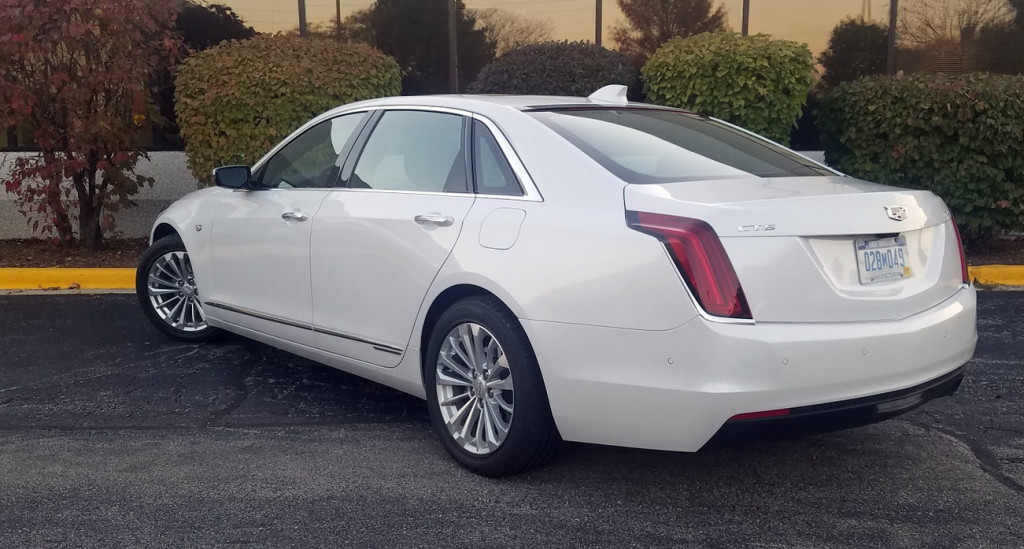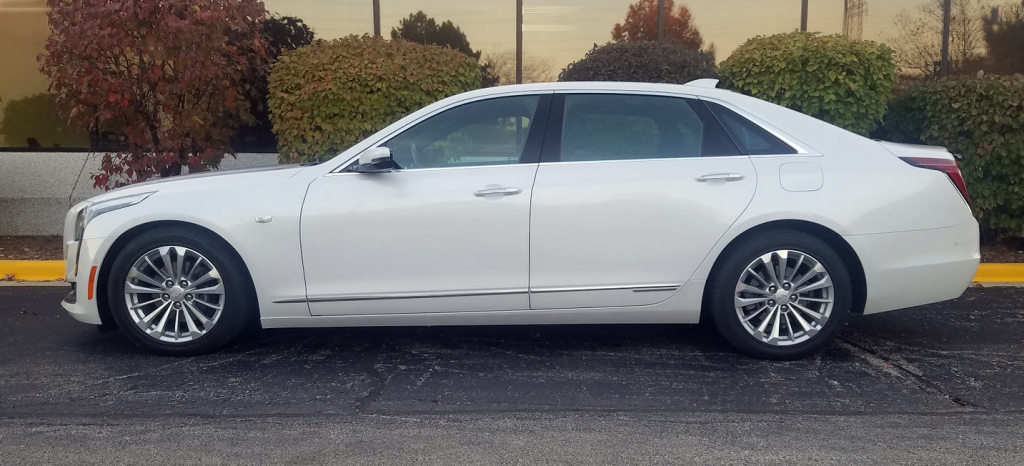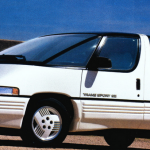
 2017 Cadillac CT6 Plug-In
2017 Cadillac CT6 Plug-In
Class: Premium Large Car
Miles driven: 288
Fuel used: 8.4 gallons
Real-world fuel economy: 34.3 mpg
| CG Report Card | |
|---|---|
| Room and Comfort | A |
| Power and Performance | B |
| Fit and Finish | A- |
| Fuel Economy | A- |
| Value | B |
| Report-card grades are derived from a consensus of test-driver evaluations. All grades are versus other vehicles in the same class. Value grade is for specific trim level evaluated, and may not reflect Consumer Guide's impressions of the entire model lineup. | |
| Big & Tall Comfort | |
| Big Guy | B |
| Tall Guy | B- |
| Big & Tall comfort ratings are for front seats only. "Big" rating based on male tester weighing approximately 350 pounds, "Tall" rating based on 6'6"-tall male tester. | |
Driving mix: 65% city, 35% highway
EPA-estimated fuel economy: 62 MPGe/26 mpg city/highway combined
Base price: $75,095 (not including $995 destination charge)
Options on test vehicle: Premium paint ($500)
Price as tested: $76,590
Quick Hits
The great: Smooth acceleration with hybrid efficiency and pure-electric-driving capability
The good: Classy interior, well-designed gauge cluster
The not so good: Limited availability, some awkward controls; hybrid hardware compromises trunk space
More CT6 price and availability information
John Biel
Bless their hearts for trying, some of the luxury-nameplate premium-large sedans are taking a shot at going “green” with hybrid models. For 2017, that tiny group added a new member, the Cadillac CT6 Plug-In, which, it’s impossible to ignore, is a plug-in hybrid that can run for a stretch on full electric power.
The Plug-In is priced near the top of the CT6 roster. At $75,095 to start, it is exceeded only by gas-V6 models at the upper-crust Platinum trim level. However, that’s still considerably cheaper than the hybrids in the BMW 7-Series ($89,100) and Mercedes-Benz S-Class ($96,600), both of which are plug-ins. (Lexus will return a conventional hybrid to the LS line for 2018 after taking ’17 off.)

Consumer Guide®’s test car was just visiting Illinois, by the way. The Plug-In is only sold in Arizona, California, Florida, Georgia, Nevada, Oregon, and Texas—and even then through a select group of dealers in those states. The lone option on CG’s example was Crystal White Tricoat paint, a $500 add-on that, with the delivery charge, brought the final tab to $76,590. Note that the CT6 Plug-In is eligible for federal tax credits of up to $7500.
Test Drive: 2017 BMW X5 xDrive40e

The thing that fundamentally sets the hybrid apart from any other CT6 is, of course, its powerteam: a 2.0-liter turbocharged four-cylinder gas engine paired with twin electric motors, and driven through a transmission that’s a cross between stepped gears and continuously variable ratios. (Cadillac calls it an “electric variable transmission.”) Total system output comes to 335 horsepower—as much as the naturally aspirated 3.6-liter V6 available in other CT6s makes—and 432 lb-ft of torque. The trans has “Tour,” “Sport,” and “Hold” drive modes that exert control over how and when electric and/or gas power is used. The Plug-In is one of the few CT6 models with rear-wheel drive.
EPA fuel-economy ratings are 62 MPGe for mixed gas/electric use, and 26 mpg in combined city and highway driving with gas-only operation. Under ideal temperature conditions, a full charge of the lithium-ion battery that takes approximately 4.5 hours on a 240-volt level-2 charger to complete provides 31 miles of fully electric operation.

Whether running on electricity or gas, the CT6 Plug-In generates sufficient power for ready getaway from standing starts, and it cruises at highway speed without protest. If it seemed a little reluctant anywhere, in this tester’s experience, it was in more midrange acceleration from the gas engine. A determined press of the accelerator with the car already moving at surface-street pace was followed by steady, gradual acceleration, not rapid pickup.
With daytime temperatures in the 40s, full charging time on CG’s level-2 charger edged closer to five hours, as indicated by a message on the car’s instrument panel. This reviewer was able to drive the car on two consecutive days with a full charge. In the prevailing temperatures and with heat on and some highway-speed driving, charges lasted from about 23 to 25 miles before switching almost imperceptibly to gas-engine operation. That helped stretch his fuel mileage after 205 miles to 31.1 mpg. Sixty-five percent of that stint was in city-type driving. Unfortunately, there was no opportunity to find out how long a charge through a level-1 household hookup would take because the standard-equipment 120-volt charging cord was missing from the test car.

Of course, the hybrid role doesn’t end when all-electric drive does. Regenerative braking returns some energy to the battery to be expended on electric-aided starts. Small paddles on the back of the steering wheel control a Regen on Demand feature that allows the driver to adjust the level of deceleration provided through regenerative braking.
A light, aluminum-intensive structure helps make a CT6 of any stripe a nimble and pleasing handler for a big car. While not quite to the level of costlier imported segment rivals, ride with the Plug-In’s standard 18-inch alloy wheels is still comfortable and fairly resistant to the majority of road shocks.
The CT6 Plug-In is more or less a prix fixe vehicle—the only factory option is the premium paint. Luxury and convenience features include leather upholstery, heated and ventilated 16-way adjustable front seats with memory settings, heated power-folding exterior mirrors, twin-pane sunroof, dual-zone automatic climate control, power rear-window sunshade, power trunklid, adaptive cruise control, and automatic parking assist.
Entertainment and technology items consist of premium 10-speaker surround-sound audio with satellite and HD radio, an embedded navigation system, Apple CarPlay and Android Auto smartphone compatibility, Bluetooth phone and audio connectivity, 4G LTE Wi-Fi hotspot, wireless charging, head-up display, a 12-inch color programmable virtual gauge cluster, and a rear-seat entertainment system with twin 10-inch screens and wireless headphones. Safety features run to a rear-vision camera, surround-vision camera that projects a 360-degree external view, rearview camera mirror with an extended viewing area, blind-zone alert, rear cross-traffic alert, forward-collision alert, front pedestrian braking, lane-keeping assist and lane-departure warning, low-speed collision-mitigation automatic braking, and night vision.
Trunk space takes a hit from the need to make room for car’s electric infrastructure. Also sacrificed is a trunk pass-through found on gas-engine CT6s. Storage bins under the floor hold the 120-volt charger and the tire-inflator kit.
In general CT6 fashion, the quiet cabin imparts a luxury look and feel, though perhaps not to the degree of its BMW and M-B competitors. There’s good legroom in either row—indeed, the two outboard spots in the rear are very good in this respect—but headroom suffers a little under the sunroof. Drivers enjoy fairly uncluttered vision most anywhere they need to look.
Test Drive: 2017 BMW 740e xDrive

Input of radio presets on the CUE infotainment system’s 10.2-inch central touchscreen is intuitive and direct, and can also be carried out via a cursor-type touchpad on the console that correlates to selections on the touchscreen, though it does demand some attention from the driver to use it. Virtual dials in the instrument display are bright, and include a charge and power dial to the left of the central speedometer. Climate controls mix touch-sensitive “buttons” for function selection with repetitive-motion toggle switches for temperature and fan-speed selection.
The glove box is big, but the console box—with a lid that opens from either side—is shallow and holds a USB port. Modest pockets inhabit each door. The console has two covered cup holders. A pull-down center armrest offers rear passengers shallow covered storage space and two pop-out cup holders.
Truth be told, the primary market for the CT6 Plug-In is in China, where greater use of electrified cars is actively promoted by government policies. In fact, the Plug-Ins sold in the U.S. are assembled in China. Demand for the car in the States may be limited, but so is the risk involved in offering it at all.




